Abstract
Previous studies from this laboratory have documented the presence of coliform bacteria emanating from wooden reservoirs containing finished drinking water. Coliforms were identified as Klebsiella pneumoniae and Enterobacter spp. In the present report, evidence is presented which suggests that the origin of these coliforms is from the wood used to construct the reservoirs. In liquid expressed from freshly cut redwood, total bacterial counts in the range of 10(5) to 10(6)/ml were commonly observed. When present, coliform counts were over 10(3)/ml of expressed liquid. E. agglomerans was the most prevalent coliform present, but Klebsiella was isolated from freshly cut logs. Citrobacter freundii was also occasionally isolated. No fecal coliform-positive Klebsiella were obtained from any of the samples. Highest total bacteria and coliform counts were observed in sapwood specimens. Coliforms were present throughout sapwood as evidenced by contact plating serial sections of freshly cut wood. Scanning electron micrographs illustrate the presence of bacterial colonies within sapwood tracheids. Other wood species also contained coliform bacteria but in numbers lower than found in redwood.
Full text
PDF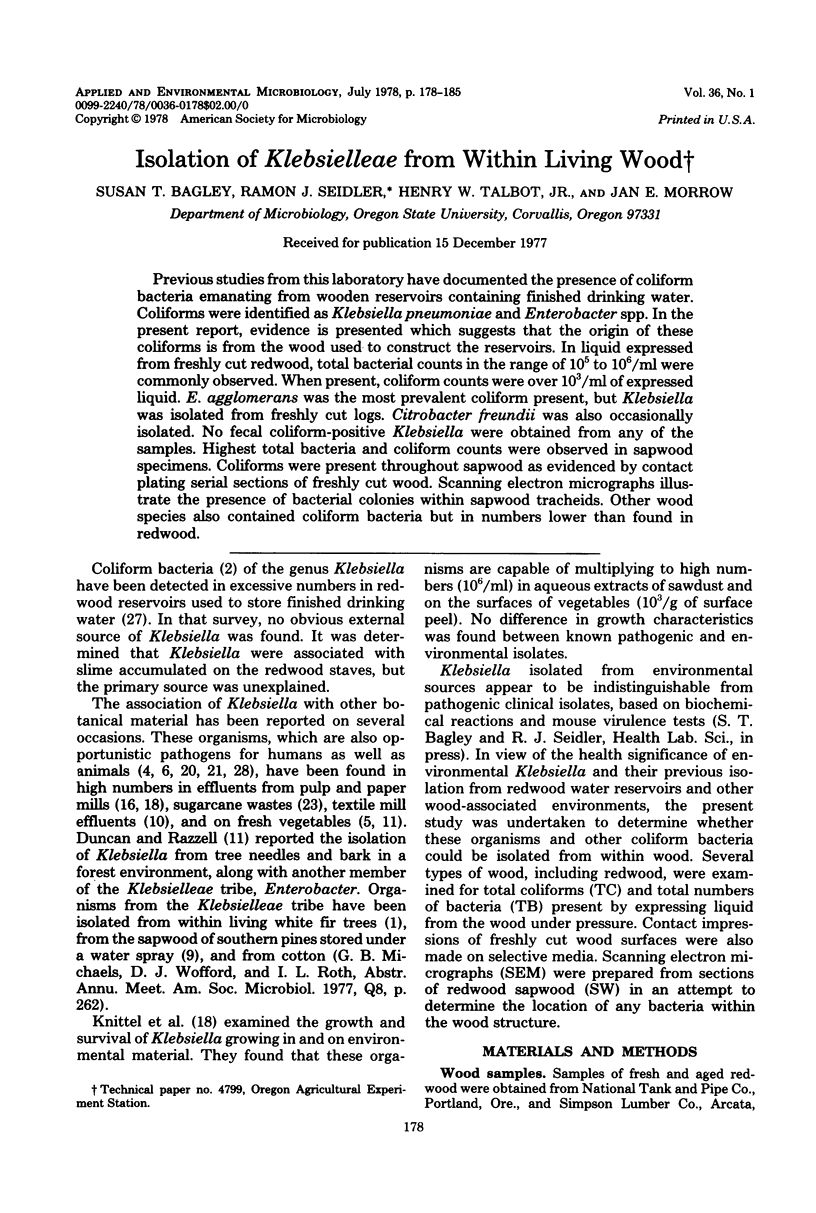
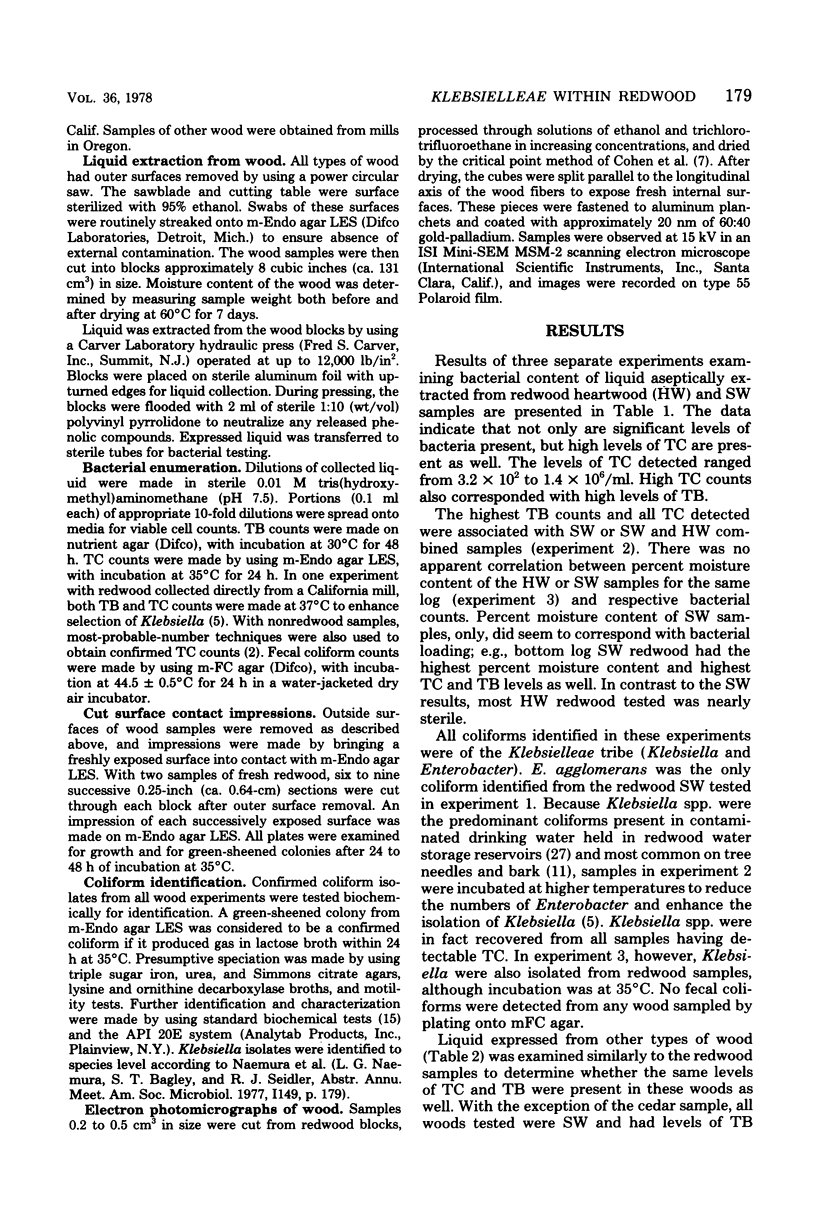
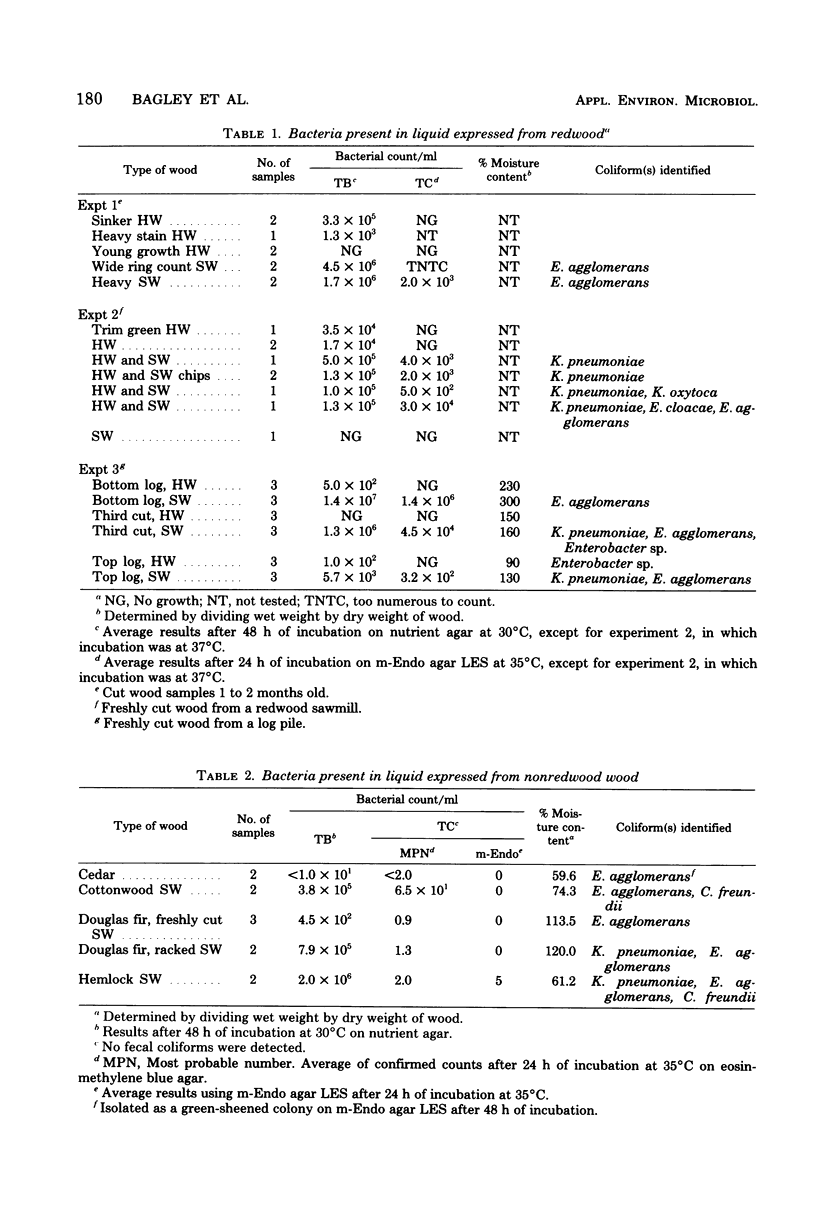
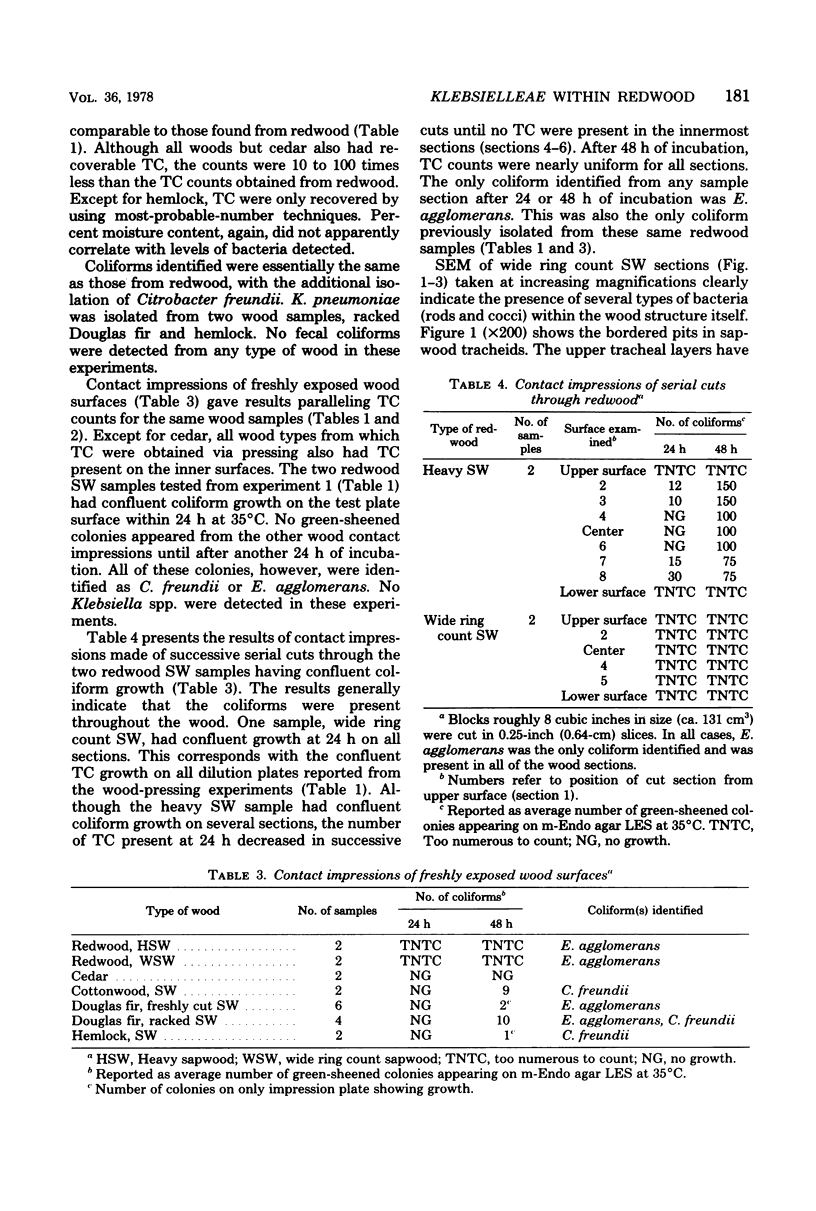
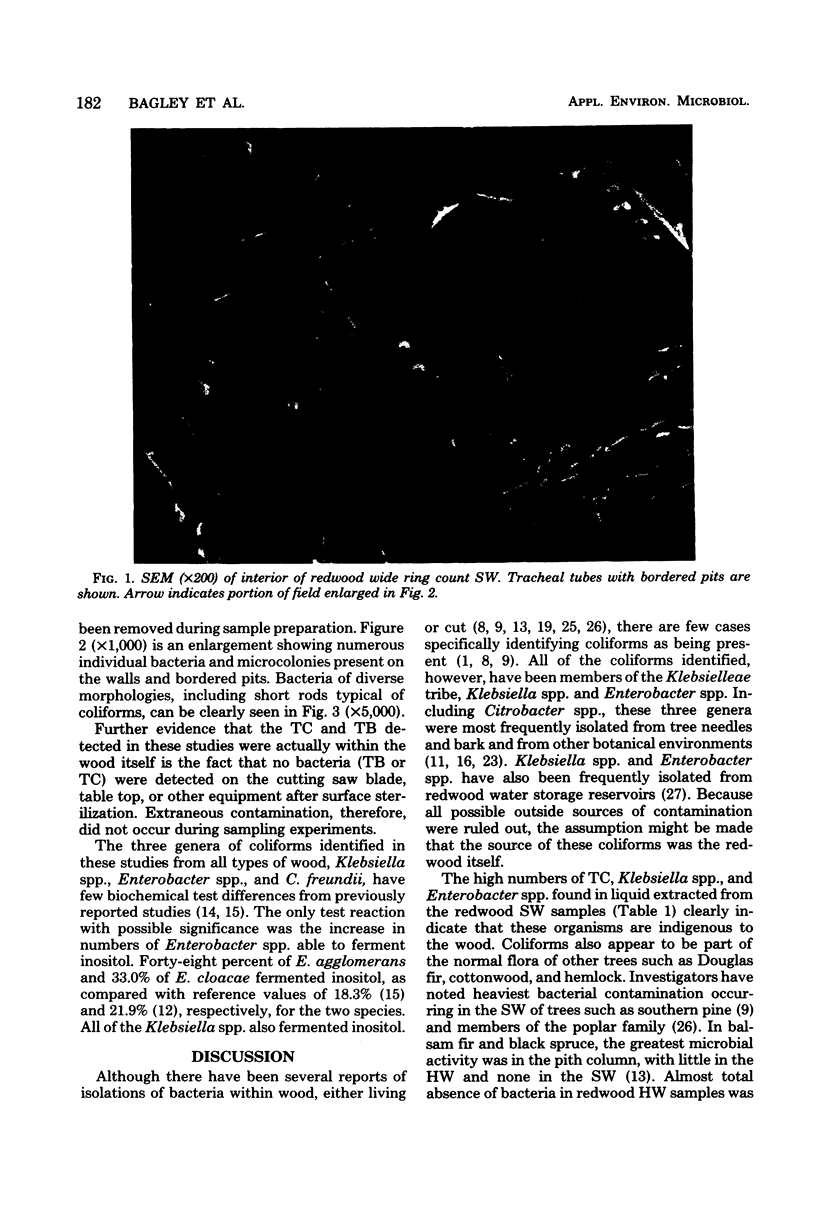
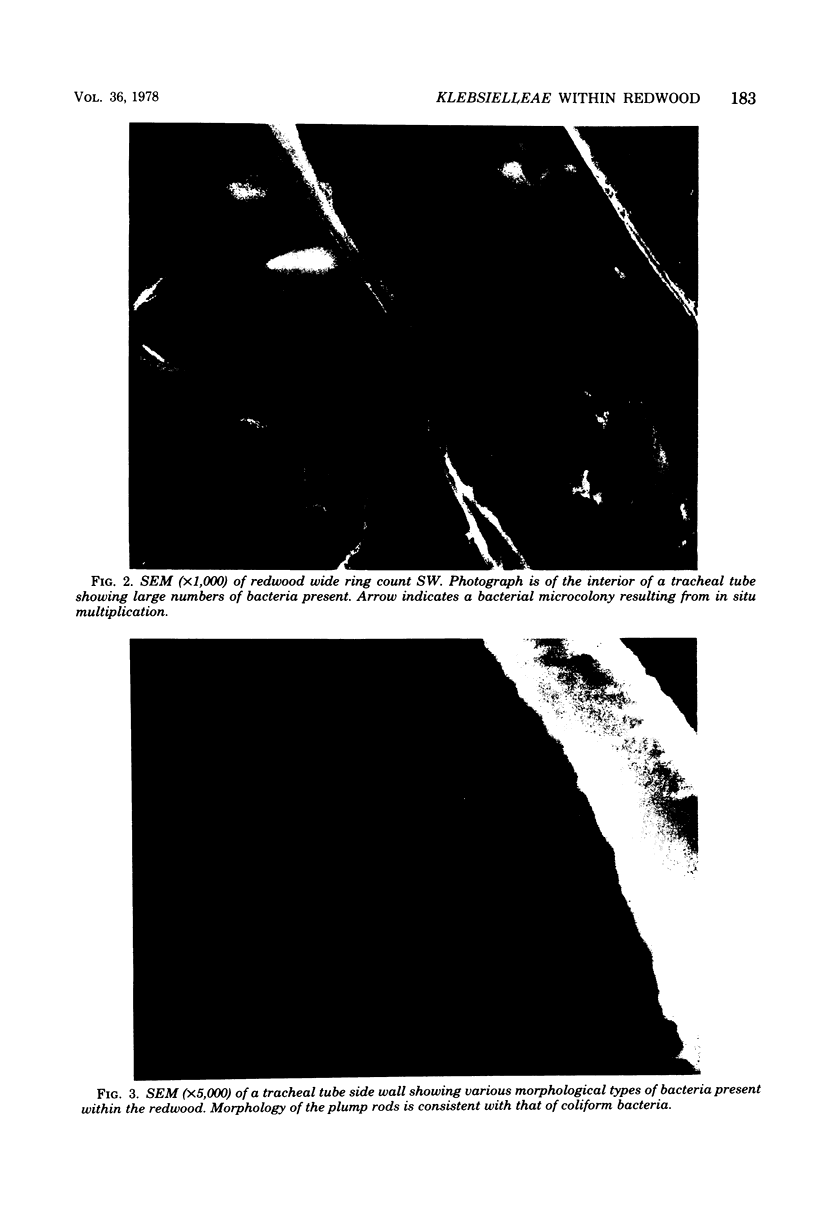
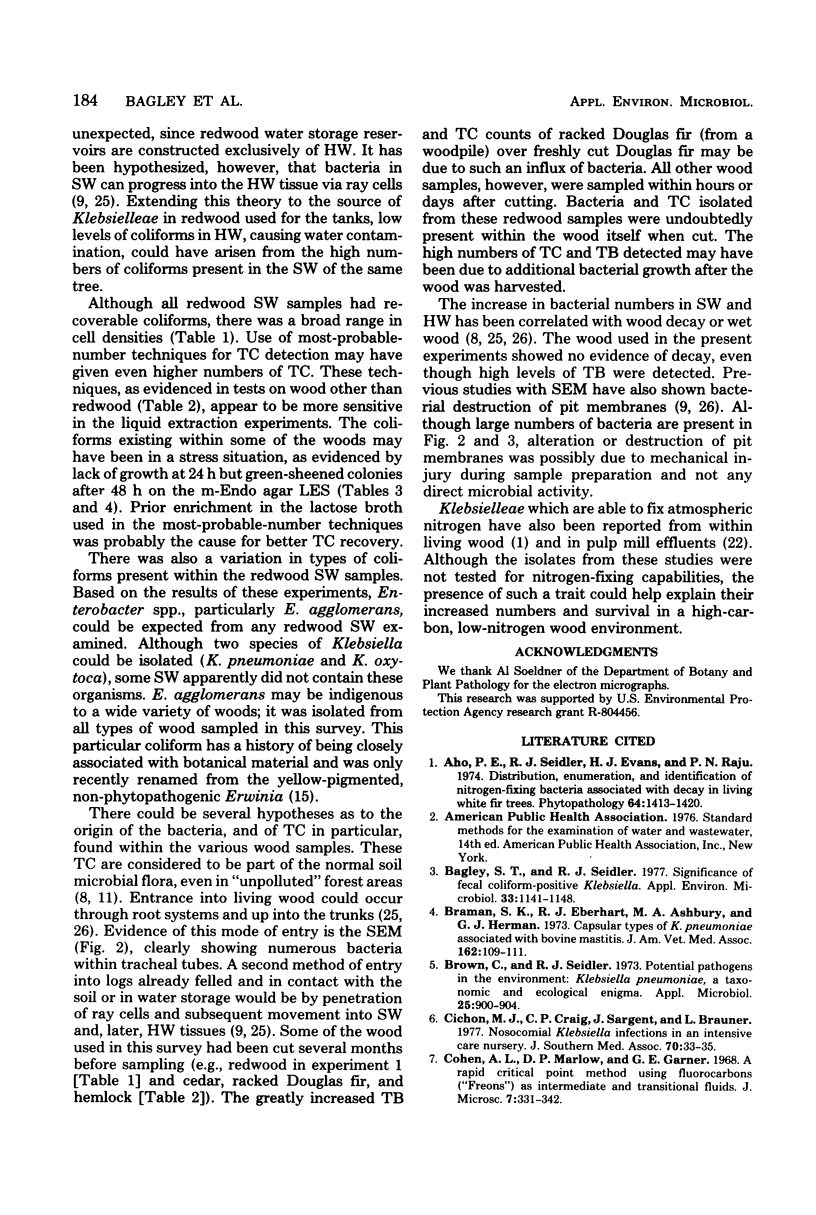
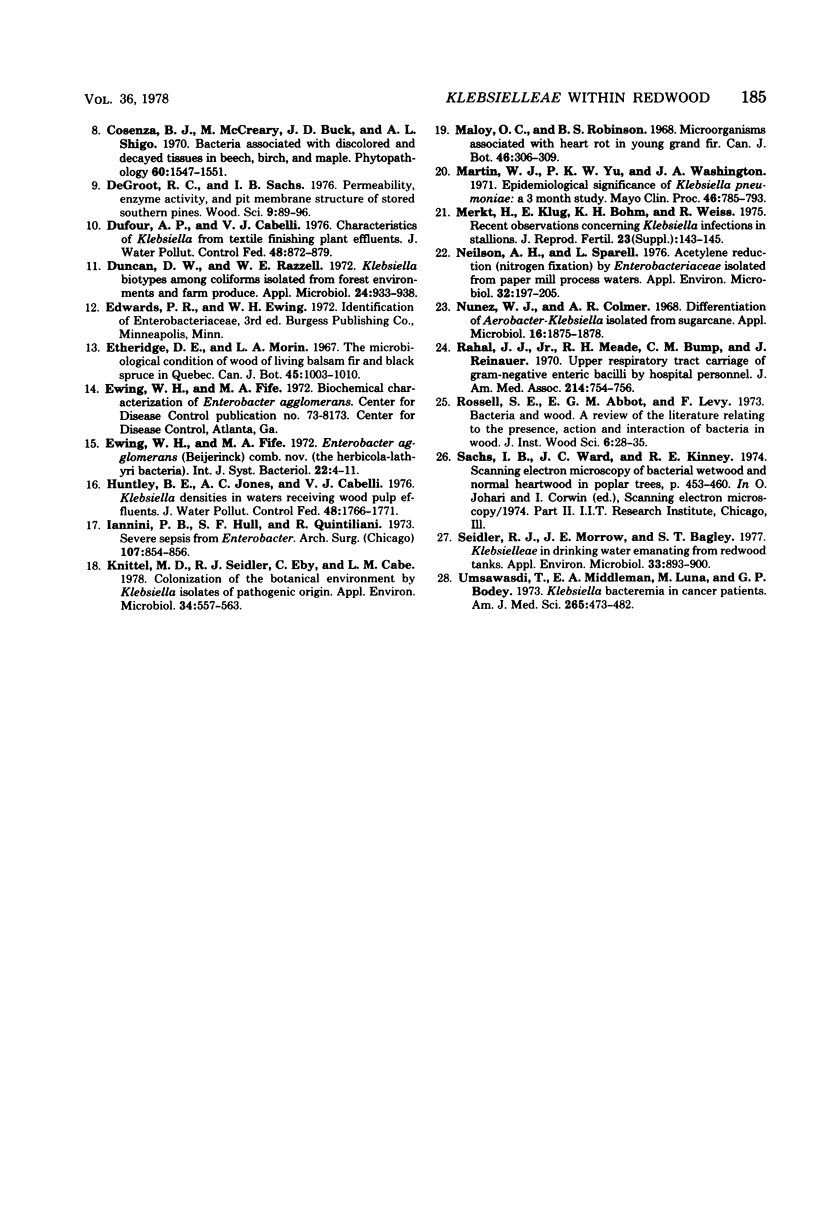
Images in this article
Selected References
These references are in PubMed. This may not be the complete list of references from this article.
- Bagley S. T., Seidler R. J. Significance of fecal coliform-positive Klebsiella. Appl Environ Microbiol. 1977 May;33(5):1141–1148. doi: 10.1128/aem.33.5.1141-1148.1977. [DOI] [PMC free article] [PubMed] [Google Scholar]
- Braman S. K., Eberhart R. J., Asbury M. A., Hermann G. J. Capsular types of Klebsiella pneumoniae associated with bovine mastitis. J Am Vet Med Assoc. 1973 Jan 15;162(2):109–111. [PubMed] [Google Scholar]
- Brown C., Seidler R. J. Potential pathogens in the environment: Klebsiella pneumoniae, a taxonomic and ecological enigma. Appl Microbiol. 1973 Jun;25(6):900–904. doi: 10.1128/am.25.6.900-904.1973. [DOI] [PMC free article] [PubMed] [Google Scholar]
- Cichon M. J., Craig C. P., Sargent J., Brauner L. Nosocomial Klebsiella infections in an intensive care nursery. South Med J. 1977 Jan;70(1):33–35. doi: 10.1097/00007611-197701000-00016. [DOI] [PubMed] [Google Scholar]
- Dufour A. P., Cabelli V. J. Charateristics of Klebsiella from textile finishing plant effluents. J Water Pollut Control Fed. 1976 May;48(5):872–879. [PubMed] [Google Scholar]
- Duncan D. W., Razzell W. E. Klebsiella biotypes among coliforms isolated from forest environments and farm produce. Appl Microbiol. 1972 Dec;24(6):933–938. doi: 10.1128/am.24.6.933-938.1972. [DOI] [PMC free article] [PubMed] [Google Scholar]
- Huntley B. E., Jones A. C., Cabelli V. J. Klebsiella densities in waters receiving wood pulp effluents. J Water Pollut Control Fed. 1976 Jul;48(7):1766–1771. [PubMed] [Google Scholar]
- Iannini P. B., Hull S. F., Quintiliani R. Severe sepsis from Enterobacter. Arch Surg. 1973 Dec;107(6):854–856. doi: 10.1001/archsurg.1973.01350240024008. [DOI] [PubMed] [Google Scholar]
- Knittel M. D., Seidler R. J., Eby C., Cabe L. M. Colonization of the botanical environment by Klebsiella isolates of pathogenic origin. Appl Environ Microbiol. 1977 Nov;34(5):557–563. doi: 10.1128/aem.34.5.557-563.1977. [DOI] [PMC free article] [PubMed] [Google Scholar]
- Martin W. J., Yu P. K., Washington J. A., 2nd Epidemiologic significance of Klebsiella pneumoniae. A 3-month study. Mayo Clin Proc. 1971 Dec;46(12):785–793. [PubMed] [Google Scholar]
- Merkt H., Klug E., Bohm K. H., Weiss R. Recent observations concerning Klebsiella infections in stallions. J Reprod Fertil Suppl. 1975 Oct;(23):143–145. [PubMed] [Google Scholar]
- Neilson A. H., Sparell L. Acetylene reduction (nitrogen fixation) by enterobacteriaceae isolated from paper mill process waters. Appl Environ Microbiol. 1976 Aug;32(2):197–205. doi: 10.1128/aem.32.2.197-205.1976. [DOI] [PMC free article] [PubMed] [Google Scholar]
- Nunez W. J., Colmer A. R. Differentiation of Aerobacter-Klebsiella isolated from sugarcane. Appl Microbiol. 1968 Dec;16(12):1875–1878. doi: 10.1128/am.16.12.1875-1878.1968. [DOI] [PMC free article] [PubMed] [Google Scholar]
- Rahal J. J., Jr, Meade R. H., 3rd, Bump C. M., Reinauer A. J. Upper respiratory tract carriage of gram-negative enteric bacilli by hospital personnel. JAMA. 1970 Oct 26;214(4):754–756. [PubMed] [Google Scholar]
- Seidler R. J., Morrow J. E., Bagley S. T. Klebsielleae in drinking water emanating from redwood tanks. Appl Environ Microbiol. 1977 Apr;33(4):893–900. doi: 10.1128/aem.33.4.893-900.1977. [DOI] [PMC free article] [PubMed] [Google Scholar]
- Umsawasdi T., Middleman E. A., Luna M., Bodey G. P. Klebsiella bacteremia in cancer patients. Am J Med Sci. 1973 Jun;265(6):473–482. doi: 10.1097/00000441-197306000-00006. [DOI] [PubMed] [Google Scholar]





